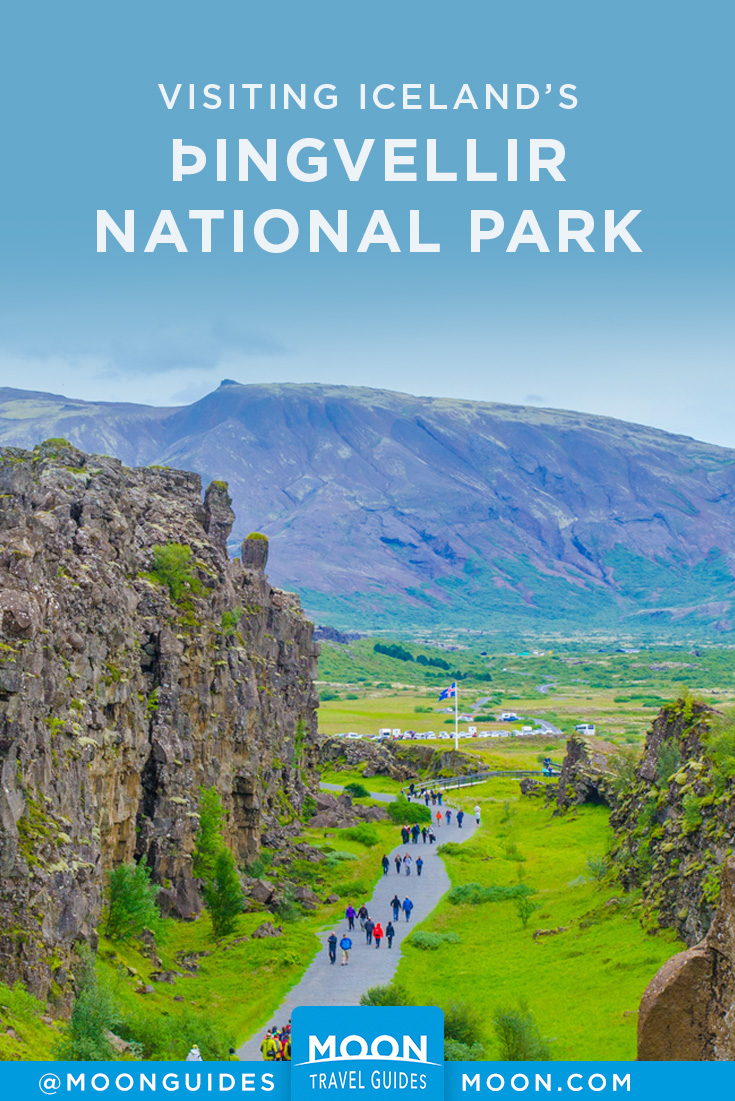Visiting Þingvellir National Park in Iceland
Þingvellir (pronounced Thingvellir) National Park is one of the top sights along the Golden Circle. Located in South Iceland, the park is steeped in history and was designated as a World Heritage Site in 2004. In addition to historical sights, visitors can enjoy outdoor recreation activities including snorkeling, fishing, horseback riding, hiking, and camping.
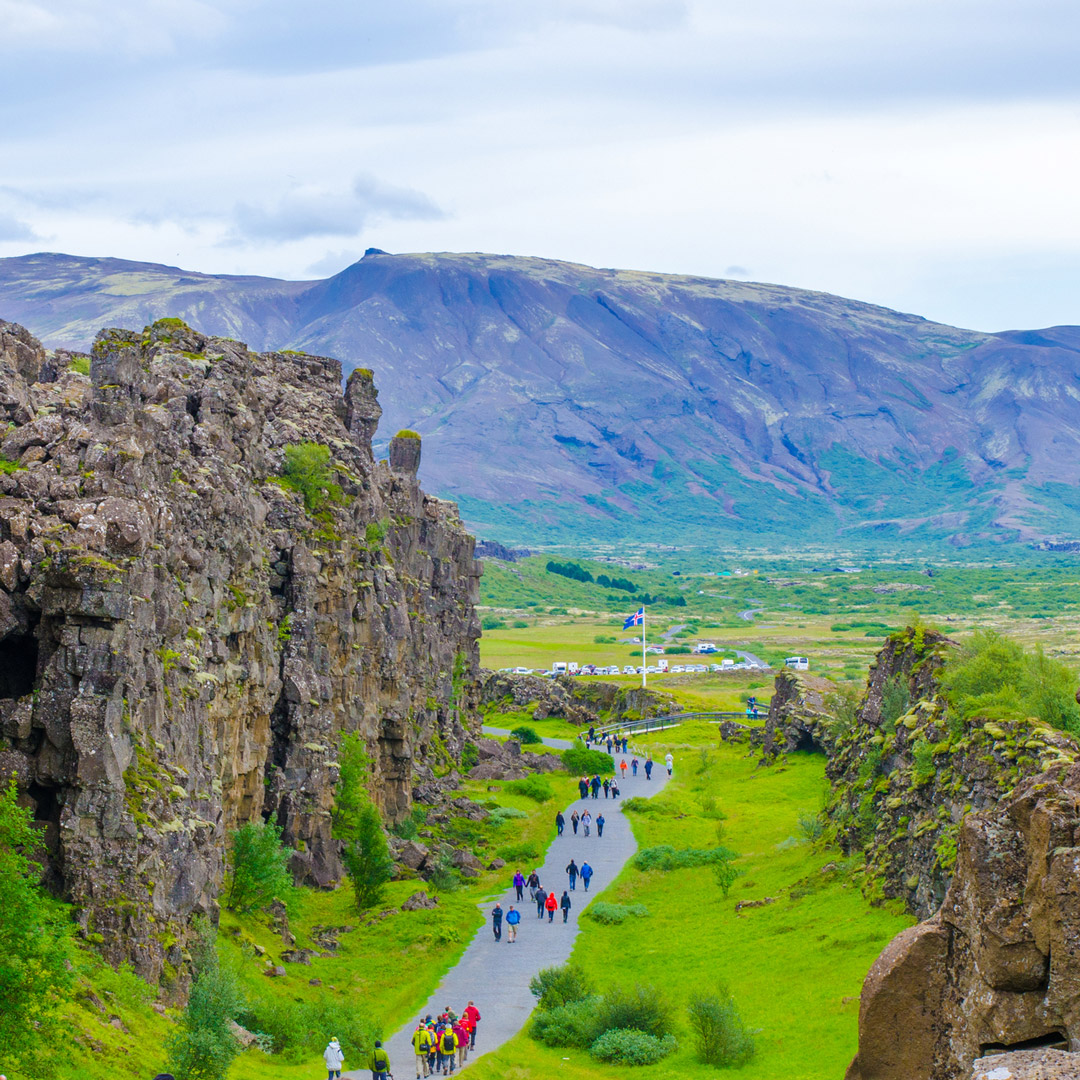
Sights in Þingvellir National Park
Þingvellir Interpretive Center
The Þingvellir Interpretive Center (tel. 354/482-2660, 9am-8pm daily June-Aug., 9am-5pm Sept.-Apr., free) gives a great overview of the national park, its history, and its geological significance. Stop in to see the interactive display and then pick up hiking maps at the information center next door.
Almannagjá
The park’s stony, moss-covered landscape is home to Almannagjá (All Man’s Gorge), which is the tallest cliff face in the national park and the original backdrop to the Alþing. This rock structure is considered the edge of the North American plate, which visitors can view up close. It’s an impressive sight, so be sure you have your camera ready.
Lögberg
Lögberg (Law Rock) is where Icelandic democracy began. Iceland’s Commonwealth period ran from 930 till 1262, and during that time, the Law Rock was the center of the Alþing (parliament). Members of the Alþing gave speeches and held events at the rock, including confirming of the year’s calendar and issuing legal rulings. A man known as the “law speaker,” who was responsible for understanding all laws and required to memorize them, read the procedural laws aloud every summer, standing on the rock.
Öxará River
The Öxará (Axe) River flows over seemingly endless lava fields, emitting a haunting mist in the winter months. It’s serene and eerie until it reaches Öxaráfoss, where the water tumbles and roars over the cliffs. At the river’s edge are a church and farmhouse, the latter of which is the official summer residence of Iceland’s prime minister. The church, Þingvallakirkja (9am-5pm daily mid-May-early Sept., free), is a charming wood structure built in traditional Icelandic design that dates from 1859. Visitors can go inside, take photos, and sit on a pew and reflect. The interior features a wooden pulpit and bells from earlier churches. There’s a small cemetery behind the church where celebrated poets Einar Benediktsson and Jonasa Hallgrimsson are buried.
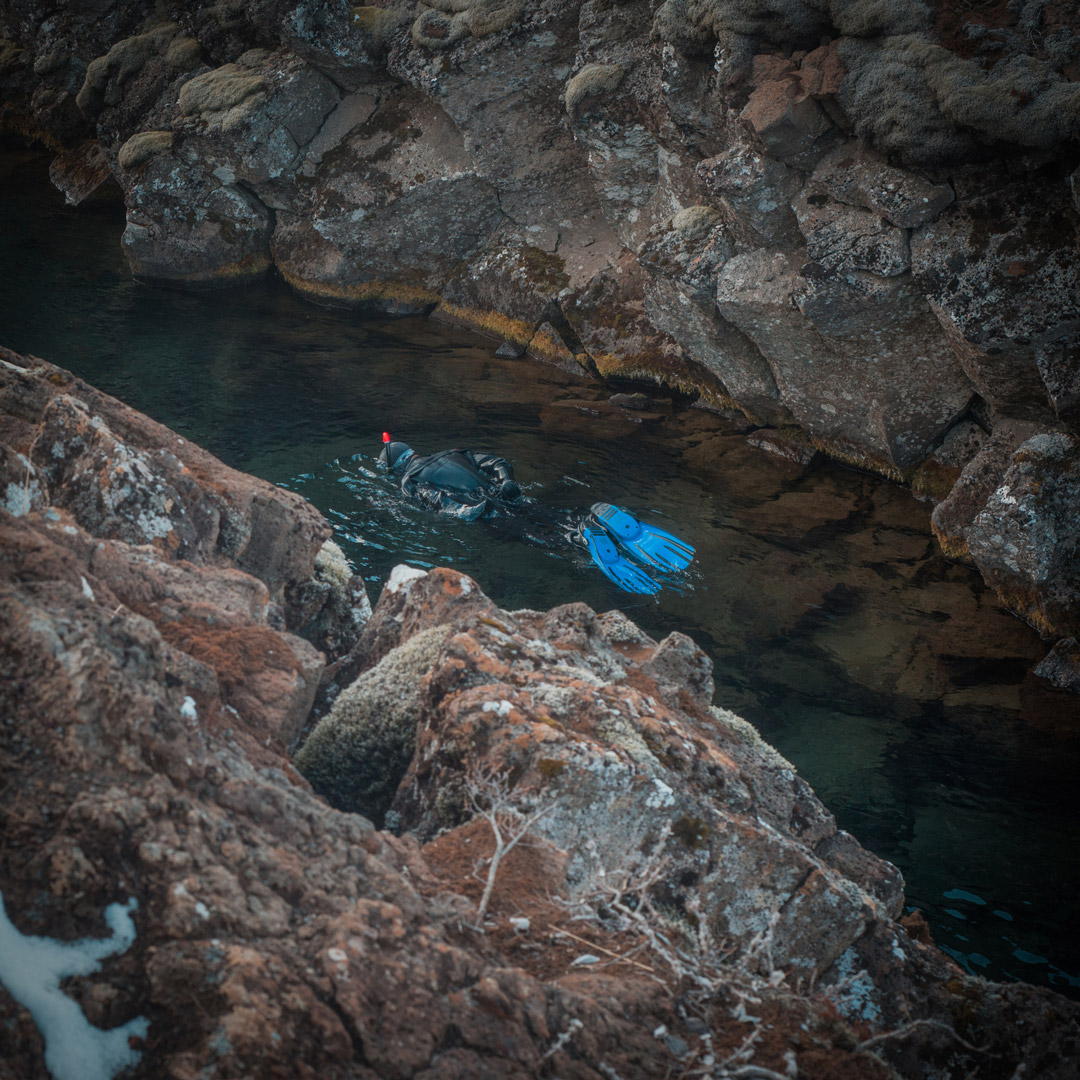
Sports and Recreation
Diving and Snorkeling
Scuba diving or snorkeling in the naturally filtered, pure water of Þingvallavatn lake is sublime. Surveying the underwater basalt walls, multicolored algae, and sloping sands is magical and unique—you’re able to snorkel or scuba in the Silfa fissure, the enormous crack between the Eurasian and North American continental plates. Don’t even think about going in without a drysuit, as the water temperature hovers around 3°C (37°F).
Diving is possible year-round. There are rules to obey, so don’t attempt to go without a guide. Dive Iceland (Ásbúðartröð 17, Hafnarfjörður, tel. 354/699-3000) offers a two-tank dive package for about 44,990ISK. Travelers must be dry-suit certified to dive. Snorkeling tours start at 19,990ISK.
Fishing
Boats are not allowed on the lake, but fishing permits are sold at the information center. Tourists have a chance of catching arctic char and brown trout. Be sure to obey the rules and pay for the permit. The fishing season at the lake runs May 1-September 15, and permits are about 40,000ISK.
Newsletter Signup
By clicking ‘Sign Up,’ I acknowledge that I have read and agree to Hachette Book Group’s Privacy Policy and Terms of Use
Hiking
Þingvellir is lovely for the casual hiker. Acres of flat lava fields make it an easy hiking spot, but be sure to be careful of open rock fissures along the way; you could fall in. There are scores of foot trails and plenty of interesting rock formations and rugged terrain to see. You can get information about trails and the surrounding area at the visitors center. If you’re looking to scale some small mountains, check out Mount Syðstasúla (1,085 meters), which is in the northern region of the park and is the park’s easiest peak to climb. The view from the top is spectacular. The moderate hike is 13 kilometers round-trip and takes about seven hours.
Horseback Riding
Þingvellir is a popular spot for riding horses, with several trails that offer the chance to check out some of the more beautiful and geologically significant areas of the park. Seeing the region by horseback is a beautiful way to survey the land. Reykjavík Excursions (tel. 354/580-5400) offers a year-round horse-riding day tour in Þingvellir for 23,300ISK.
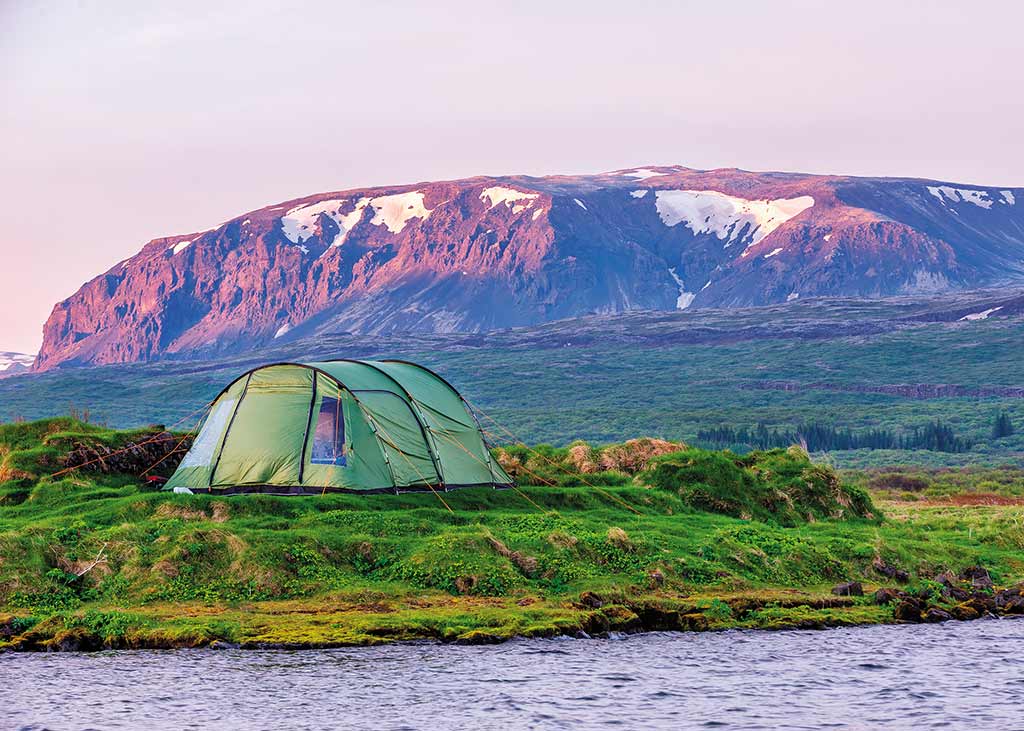
Campsites in Þingvellir National Park
There are no hotels within Þingvellir National Park. However, there are accommodations in nearby Laugarvatn and Selfoss. If you would like to stay within the park limits, your only option is camping at one of Þingvellir’s five campgrounds, spread across two areas of the park: the Leirar section, which is a five-minute walk from the Þingvellir information center, and the Vatnskot section, which is by Lake Þingvallavatn.
The Leirar campground is divided into four campsites: Fagrabrekka, Syðri-Leirar, Hvannabrekka, and Nyrðri-Leirar. The Vatnskot campground is situated at an abandoned farm by the lake. All campsites have access to toilets, electricity, and cooking facilities. The difference in the two sections is not about amenities, but whether you want to camp close to the lake or stay closer to the information center. Both sections have great landscape views and spacious fields. The campgrounds are open June 1-September 30, and cost 1,300ISK per person.
Information and Services
The tourist information center (tel. 354/482-2660, 9am-8pm daily June 1-Aug. 31, 9am-6pm daily Sept. 1-May 31) is close to the car park. Be advised that there is a service fee of 200ISK to use the bathroom.
Transportation
Þingvellir is 46 kilometers northeast of Reykjavík. By car, take Route 1 to Route 36, which will take you to the northern part of the park.
While there is no public transportation available to get to the park, a number of tours include a stop at Þingvellir. Check out Reykjavík Excursions (tel. 354/580-5400) for daily departures.
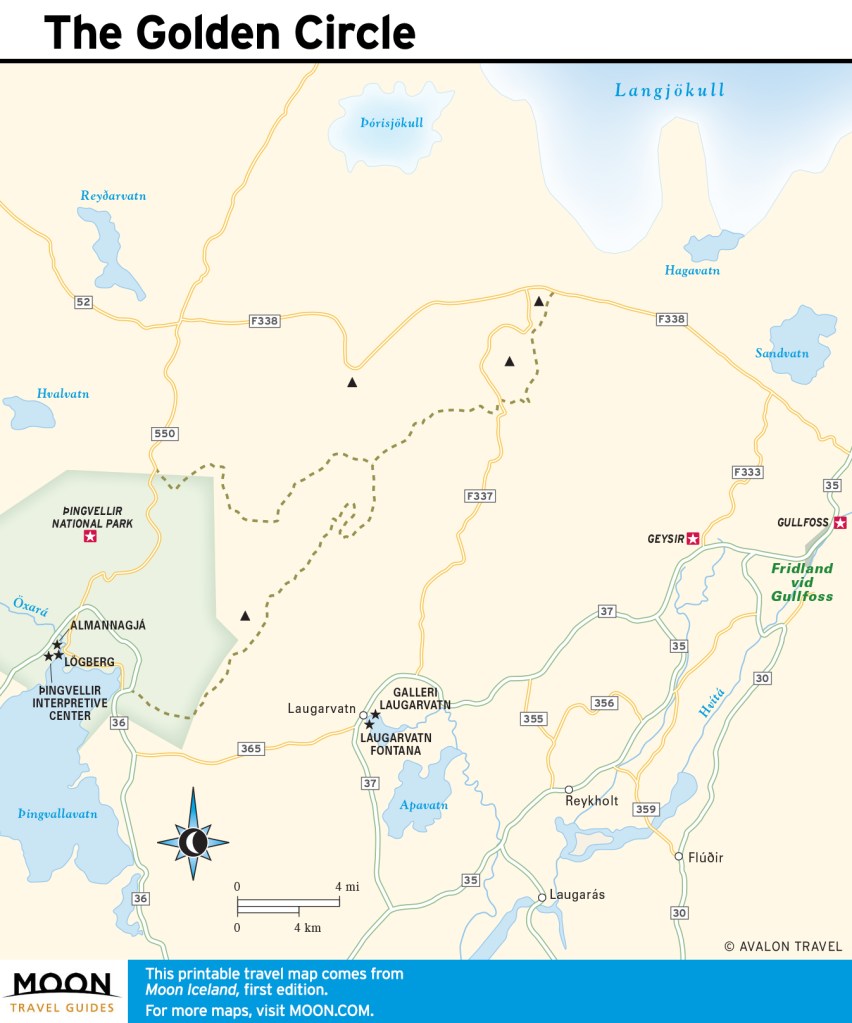
Newsletter Signup
By clicking ‘Sign Up,’ I acknowledge that I have read and agree to Hachette Book Group’s Privacy Policy and Terms of Use
Build your Europe travel bucket list
Get inspired and get ready for adventure with the ultimate guide to Europe’s best trips!
Pin it for Later
